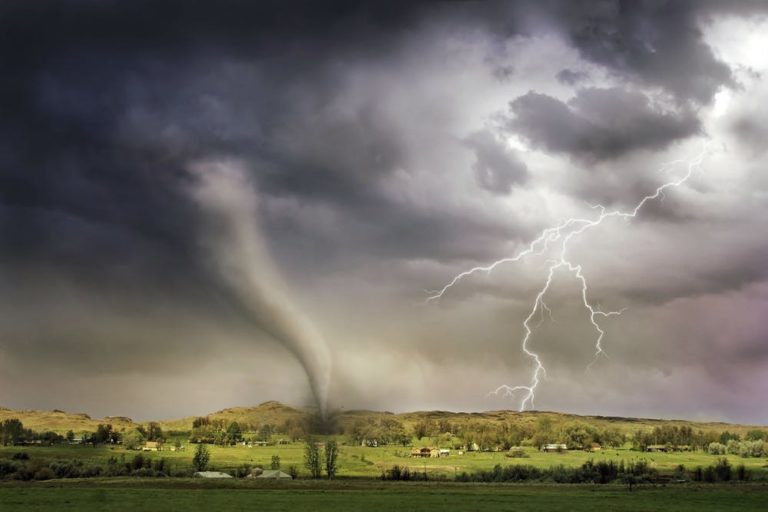
When the news earlier this week came about the tornado in Moore, Okla., my husband Mike and I looked at each other wide-eyed.
“I didn’t think living through that other tornado bothered me, but I still have nightmares about it,” Mike told me.
On May 3, 1999, Mike and I were living in Stillwater, Okla., where I was completing my graduate work. Times were simpler for us then. I worked hard at finishing my coursework and research, and Mike wrote software for a local software company.
Part of my clinical training required me to travel through Moore twice a week. I was supposed to go there on the day of the tornado, but my allergies were bothering me, a dissertation draft was due, and finals were coming up – so I took the day off and stayed home instead.
Mike’s work sent him home early that day because the area was under a tornado watch.
Mike and I were what the locals termed “transplants.” We had moved from Minnesota a few years earlier and hadn’t completely absorbed the local culture. One of the things we had snickered about, albeit mistakenly, were the local meteorologists. They were pretty corny and prone to overly dramatic statements about threats of rain, hail and tornadoes.
Being from Minnesota, we viewed ourselves as pretty tough. We’d survived tornadoes, of course, as well as blizzards, ice and 40 below temperatures. There was no need for the television drama.
Or so we thought.
The television announcer encouraged people to go to a storm shelter or a basement or to find an interior room in the house (or a bathtub) to stay safe.
We didn’t have a basement. Houses in Oklahoma are often built on hard clay or rock, and although some homes have small storm shelters, ours did not – and neither did anyone else’s in our neighborhood. So Mike and I gathered our golden retriever, put our two cats in their cages, took them into the bathroom and left them there with the door shut. We found a camping mattress to hold over our heads. Then we went back to the living room and watched the TV forecast.
The TV announcer said that the tornado had touched down in Moore as well as Oklahoma City and Guthrie. It was heading our way.
We decided to go outside for a moment to watch the powerful weather front move in. As soon as we stepped out our front door, the woman across the street emerged from her house and screamed, “Get back inside! It’s coming.”
We looked up at the sky and saw two tornado funnels in the distance, twisting and twirling together like a double helix. Coming in fast. But I was still surprised by the tenor of our neighbor’s voice.
It held true terror. Something one doesn’t hear often.
We ran to the bathroom. We got in the bathtub and sat there with the dog between us, each of us holding a cat in its cage. We listened to the television from the other room as best we could. We sort of laughed at the ridiculousness of it all – us sitting in the bathtub with our pets holding a mattress over our heads.
We waited.
We could hear the hail and the wind. I felt my ears pop a few times. I wondered if the tornado was near us, or if it was overhead.
We never lost power, but it was loud in the bathroom. Between the wind, the displeased cats’ soulful meowing, and the dog’s panting, we couldn’t hear the television in the other room anymore.
We just waited some more.
Eventually, after 30 minutes or so, the dog got restless and jumped out of the tub. Mike decided to check things out. I waited in the bathtub with the cats.
“It’s over,” Mike called from the living room. “The storm moved north.”
The tornadoes had touched down about five miles away from us, but they didn’t harm our house. There was some damage from the winds, but nothing severe.
I called my friend who lived near Moore to see if she was okay. She was, but said the damage was bad. I still didn’t understand how bad. I watched the coverage on the news. I thought about how I wanted to help and started gathering some supplies together to take to the Red Cross when I went up to Moore in a few days. Even after the news coverage, I didn’t have the slightest idea of how horrific the damage was.
As I drove through Moore a few days later, however, I started understanding. During the entire drive, more than 60 miles, I followed the path of the tornado. There was a 20-to-30-foot trench the entire way. Any buildings or dwellings in the path were flattened.
When I got to Moore, the true damage revealed itself. I wasn’t prepared for what I was about to see.
The tornado in Moore that year was a Level 5 tornado, at least a mile wide. The path of destruction was much wider and Moore looked like a war zone.
The buildings and homes that had stood there before were just gone. Only a mile-wide pile of rubble remained.
Plumbing stood exposed, and home materials like wood and brick were everywhere. An occasional car or truck lay on its side in the middle of the rubble.
In the mix were things that people use every day. A toy car. A baby blanket. A bike without a wheel. A lamp. All mixed together in a soup of debris. I had never, ever seen that much destruction. People were still trying to sort through pieces of the rubble, trying to find memories and possessions.
I gained a great deal of humility from that experience.
We may think we know what it’s like when tragedy strikes. We may even think we know what it’s like for someone else when we’re involved in the tragedy or perhaps on the edges of it ourselves – when we’ve sat in the bathtub with our pets waiting for the tornado overhead.
But we don’t.
Television coverage is too far removed from the true experience to know what devastation is like firsthand. But this much is true: We can assume that it’s probably worse than we can imagine. And we can try to imagine how hard it would be to lose our home, or worse yet our family members, friends or neighbors.
The tornado that hit Moore on Monday gave people 16 minutes notice before it hit. Not enough time to go to a shelter, and barely enough time for people to barricade themselves within their houses.
Not nearly enough time to prepare emotionally for the loss of life, safety and possessions.
Even if they’re not in our neighborhood, these events touch us all. Please remember the victims of the Moore, Oklahoma, tornado during the next few weeks and months, and please consider making donations to the American Red Cross, The Salvation Army or other organizations that can help ease the burden and provide local support and help for tragedy.
![]()
